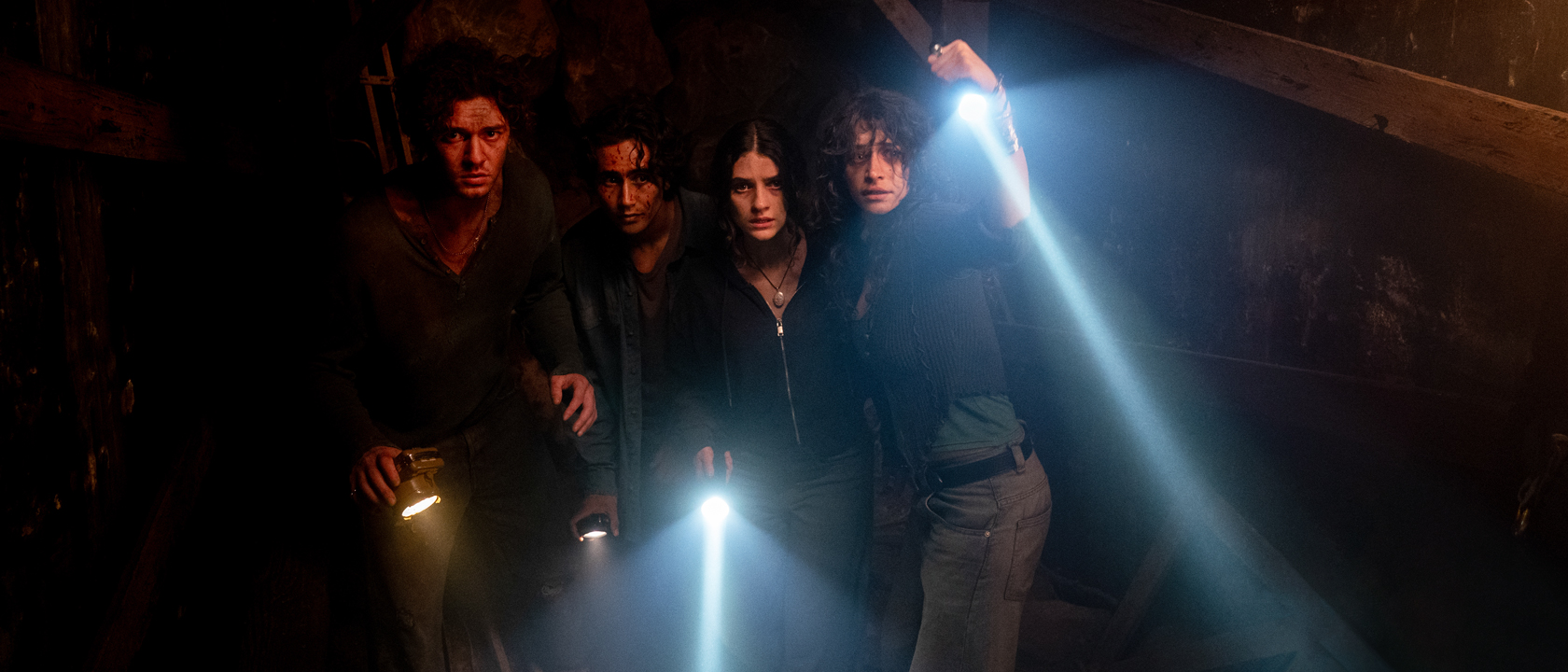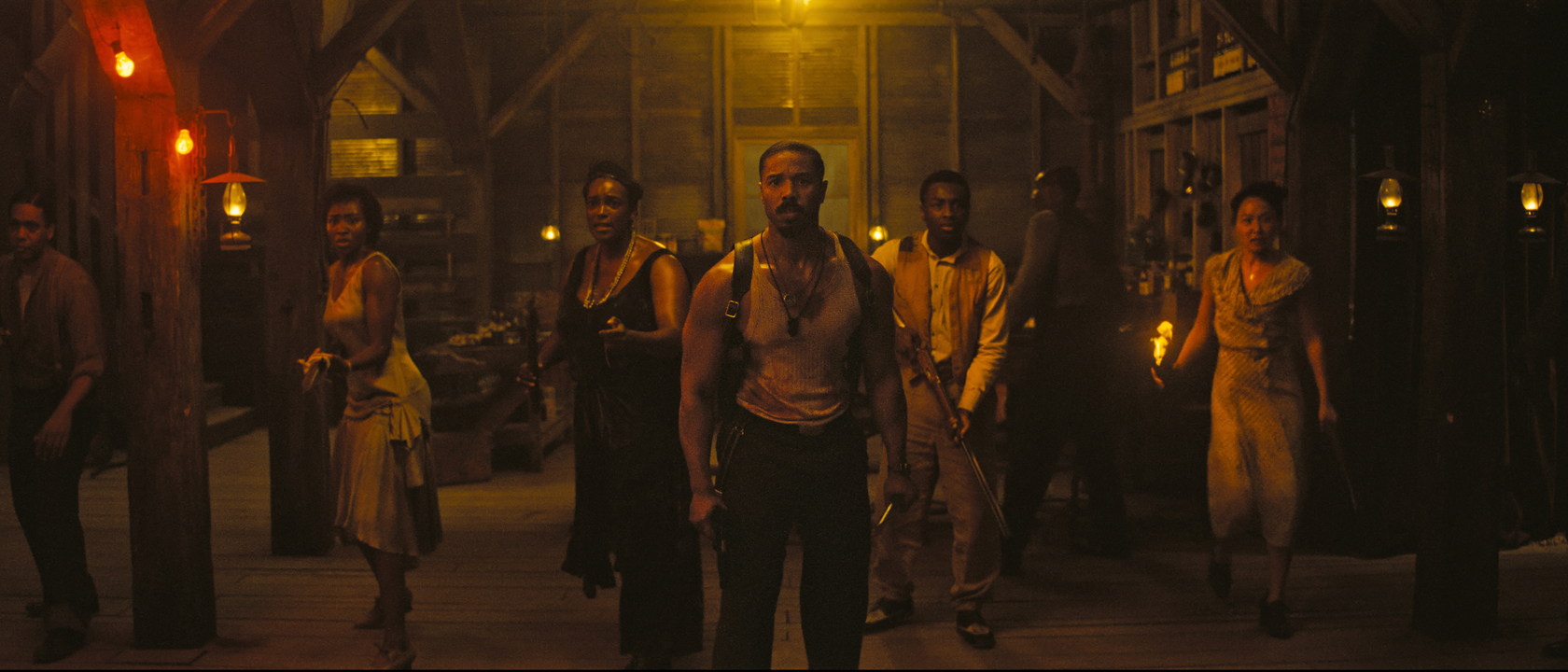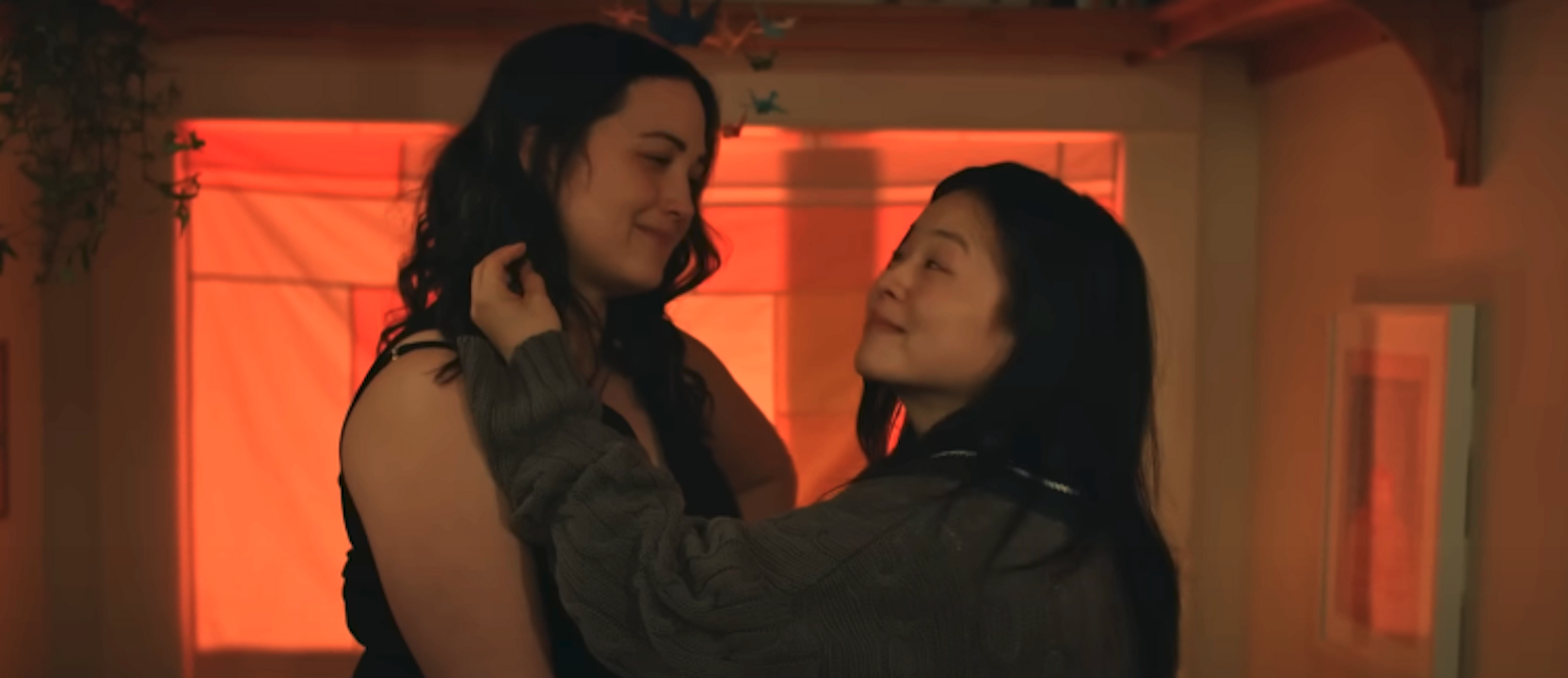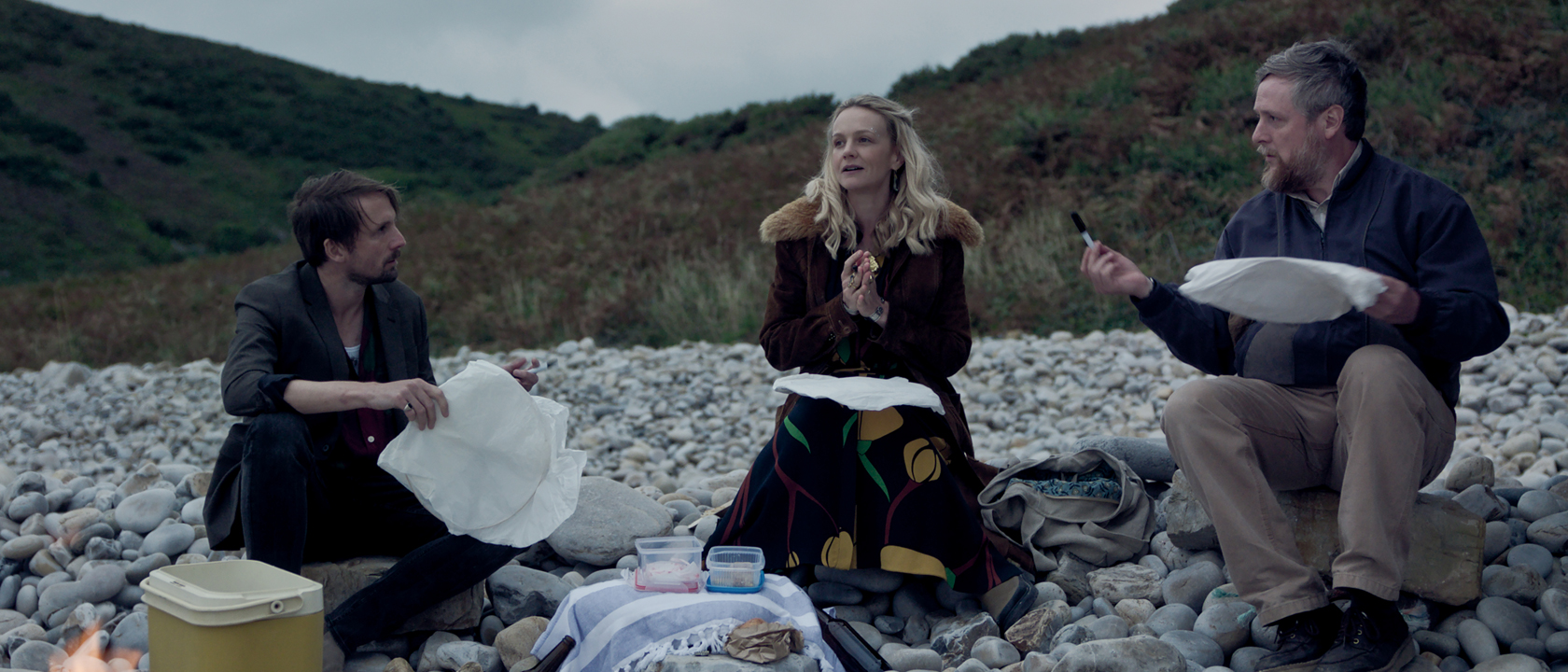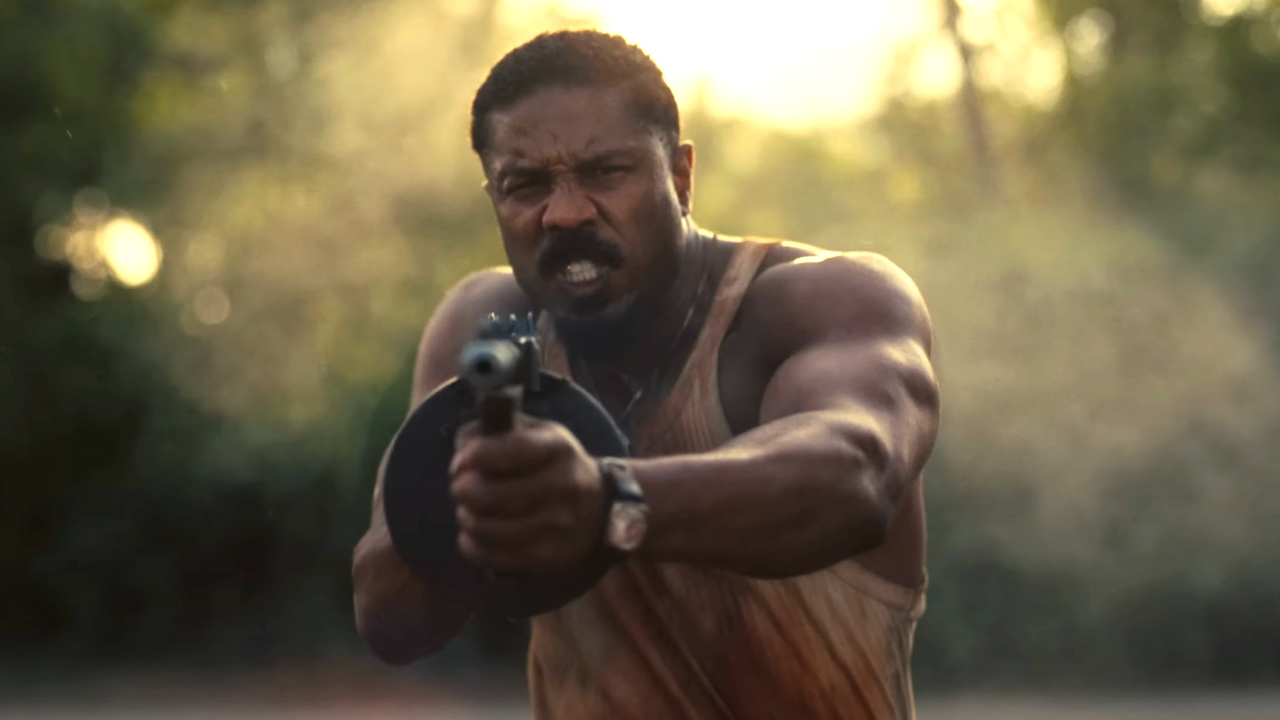What could the release of the full series of Twin Peaks be other than a blessing, a gift of the television gods? Each season has been released separately in the past, though the first, far-superior season, has been largely unavailable for the last few years. I got into the show back in college, thanks to bootlegs from Danish television somehow acquired by a friend of mine. We got used to hovering over a laptop, squinting past pixellated images and ignoring the strange Scandinavian subtitles to become engrossed in the saga, by far the weirdest thing we’d ever see come from prime time.
I was too young for the original Peaks-mania, but the appeal hadn’t faded 15 years later. Twin Peaks did what Lost, Heroes and countless others would do a decade later, telling multiple interlocking stories with a supernatural element, folding mystery upon mystery and never letting the audience off tenterhooks. The series is kicked off by the murder of Laura Palmer (Sheryl Lee), a homecoming queen in the tiny northwestern town of Twin Peaks. She’s discovered on a rocky beach by Pete Martell (Jack Nance), and when another young girl is found wandering, confused and beaten up, across state lines, the FBI is called in.
The Agency sends Agent Dale Cooper (Kyle MacLachlan), an endlessly eccentric, cool-as-a-cucumber G-man with a fondness for pine trees, hot coffee and cherry pie, all of which Twin Peaks boasts in spades. Cooper teams up with Sheriff Harry S. Truman (Michael Ontkean) to solve the murder, which involves interviewing the shadiest suspects (Laura’s juvenile delinquent boyfriend Bobby, wife-beating Leo, loony psychiatrist Dr. Jacoby, and even a mysterious one-armed man) and meeting those closest to Laura to uncover the secret life she kept that led to her demise.
Mark Frost and David Lynch created the series together, but it’s Lynch who had the strongest creative hand. He made a name for himself by exploring the dark underbelly of Americana in films like Blue Velvet and Wild At Heart, and Twin Peaks features plenty of illicit affairs, drug addictions, sexual vices and just about anything else a prime time soap opera could throw at you. Beneath it all though, shines Lynch’s genuine love for America, and it's that which gives the series its heart. Twin Peaks may be twisted and dark, but it is never cynical, a crucial balance that made it an engrossing mystery on its surface and a psychological drama on a deeper, far darker level.
The expansive supporting cast of Twin Peaks is its greatest asset, from Leland Palmer, the crying, dancing and mysteriously gray father of the murdered girl (Ray Wise) to Nadine, the one-eyed superwoman in the process of inventing silent drape runners (Wendy Robie). The cast draws in some legendary character actors from the previous two decades, including West Side Story castmates Richard Beymer (as Ben Horne) and Russ Tamblyn (as Dr. Jacoby). Every character get their chance to shine; this is a town in which no one is what they seem, in which everyone is sleeping with someone other than their partner, double-crosses abound and every question answered brings up five more questions in its place. It’s no wonder that, even after Laura’s murder is solved early in the second season, Cooper has plenty left to figure out.
It’s common knowledge that once Laura’s killer was revealed, thanks to network pressure, Twin Peaks sharply declined in quality. Lynch left production to work on Wild at Heart, Frost was filming his own movie, and the remaining writers scrambled for new mysteries, bringing Cooper’s psychotic ex-FBI partner Windom Earle (Kenneth Welsh) to town and introducing a very, very young Heather Graham as Coop’s new love interest. Peaks-mania died quickly, and the series limped along to its conclusion, which was fascinating despite all odds, thanks to Lynch’s belated return to production.
Still, having both seasons together is crucial, as much for the conclusion of certain mysteries as guest appearances as unlikely as David Duchovny as a transsexual (and this was in 1991!) Twin Peaks is probably Lynch’s most deeply flawed masterpiece, even in a career that some consider to consist of nothing but deeply flawed masterpieces. Even in the new golden age of television, when dozens of shows are willing to push the envelope in the way ABC feared back in 1990, Twin Peaks remains daringly cinematic and fresh, fascinating even in some of the truly awful episodes of the second season. It’s still revered among TV fans and Lynch supporters, but hopefully thanks to this DVD set it won’t be forgotten any time soon. Everything looks and sounds great in this DVD release, at least compared to the bootlegs on which I first saw the show. There are no commentary tracks for any of the episodes, which is somewhat disappointing, but what almost makes up for are introductions to each episode from the Log Lady, recorded when the show aired on Bravo earlier this decade.
Written by Lynch, the intros are creepy, cryptic and often prophetic; it’s hard to know what they add to a given episode when you don’t already know what’s going to happen, but they absolutely set the mood. Plus, more Log Lady is always welcome.
What’s absolutely crucial here, though, is the pilot, which due to crazy rights issues wasn’t included on the first DVD edition of the first season. We get both the version that aired on American television and the “European edition,” which aired as a feature-length movie and tacked on a conclusion that somewhat spoils the ending of the series. For anyone starting the series for the first time, the American pilot is more than enough; just having it here is cause for celebration.
Touted as the “Gold Box Definitive Edition DVD Set,” this issue packs surprisingly few special features, at least compared to other major TV show DVD releases. An introduction to the deleted scenes explains that, before DVD releases of TV shows were common, extra footage was usually trashed or destroyed without a second thought. Still, it’s surprising that there are only four deleted scenes, one of which doesn’t include a single major character (though it does contain a hilarious reference to a prostitute as a “yachting enthusiast.”) It’s especially frustrating given that three different scenes revealing Laura Palmer’s killer were shot, with three different actors; I’d take a fraction of any one of those scenes over a scene of Andy and Lucy buying doughnuts ay day.
The best deleted scene is one between Dr. Jacoby and Cooper, with a tourist attraction Indian standing in the background, bow and arrow at the ready. It’s a single take, entirely focused on Dr. Jacoby, in which he talks about his relationship with Laura Palmer; not only is it a thrill to watch Tamblyn in character, but at the end, the Indian shoots the arrow, much to Jacoby’s delight. It’s a perfect distillation of Lynch’s random sense of humor, in addition to extra time spent with two beloved characters.
The “production documents” section is similarly bare, featuring a handful of call sheets from the set, a few marked-up script pages and even a script continuity guide. Basically it’s the detritus you could probably find lying around any film set today, totally forgotten by the crew. It’s hard to quash the suspicion that Lynch and Frost have a treasure trove of material they’re keeping secret from us, just to be obstinate.
All the good stuff left over from the production seems to have been saved for the documentary “Secrets from a Another Place,” which is the real gem of the special features. Four different half-hour segments detail the making of the pilot, first season, second season, and even a whole section for the music (Angelo Badalamenti’s score remains one of the most haunting elements of the entire series). A ton of cast members sit down for interviews, including MacLachlan, Wise, Sheryl Lee (Laura Palmer/Maddy Ferguson) and Kimmy Roberts (Lucy Moran). They’re full of great anecdotes, from Joan Chen (Josie Packard) admitting that her part was originally intended for Lynch’s then-paramour Isabella Rossellini to Roberts saying straight out “The whole second season pretty much sucked. I stopped watching.” Frost, who is rarely credited for his work on the series, is the strongest narrative voice, describing his and Lynch’s writing process and how they wove the story together with so many disparate pieces. He winningly describes the insane first season finale as “throwing in every cliffhanger but tying a lady to the railroad tracks.” Yeah, when you have one character committing suicide, two shot and another tied up inside a burning building, that’s a pretty fair description.
There are a number of promotional materials for the series, including TV spots and the audio from a 1-900 call-in number, where Peaks fans would call to hear Lucy spout teasers about the next week’s episode (it’s what they had us do before texting our votes on American Idol, I guess.) There’s also a pretty slapped-together music video for the song “Falling” by Julee Cruise, which appeared in the first episode. The funniest by far are a series of Japanese TV ads that the Peaks cast did after the series ended, for a product called Georgia coffee—iced coffee in a Red Bull-sized can. Cooper, Lucy, Harry and Andy team up with an unidentified Japanese man to solve mysteries all over town, eventually breaking for Georgia coffee when the Log Lady shows up to tell them they should. I never knew these existed, and I love knowing that, even after Twin Peaks went off the air, the beloved characters lived on, an ocean away, in the campiest way possible.
Less exciting is a segment called “Return to Twin Peaks,” which films the annual Twin Peak Festival that happens each year in and around North Bend, Washington, where the pilot was shot. While the interactive map featuring several iconic locations is fun, watching the geeky fans ramble on and on about their love for the show is pretty much like getting stuck in a room with the biggest Twin Peaks fanatic you know.
The flat-out winner of the special features is a short featurette called “A Slice of Lynch,” which is so atmospheric and weird it could have been directed by David Lynch himself. It starts with Lynch sitting at the end of the counter at a moody, dark diner, eating—what else?—a slice of cherry pie. He “flashes back” to several scenes from the show, including Cooper saying “I have no idea where this is leading us, but I have a feeling it will be both wonderful and strange.” And then, voila! Madchen Amick, who played Shelly, MacLachlan and John Wentworth, a producer from the show, are sitting with him at the bar. Lynch does most of the reminiscing, explaining his silly nicknames for all three (he calls MacLachlan “Kale!”) and lamenting the forced early resolution of Laura Palmer’s murder, calling it “killing the goose that laid the golden eggs.” It’s classic Lynch, rambling without regard to those sitting with him, but somehow endearing all the same.
The packaging of the series is fine, with 10 DVDs and a funny insert advertising Lynch’s apparent latest business venture, coffeemaking (“Because I’m just full of beans.”) What would have been great would be a booklet with episode descriptions and guides. The discs have episode numbers printed in tiny font, but even the DVD menus don’t include the episode names, leaving you to guess (or consult Wikipedia) to find that episode when Gordon Cole first shows up, or when Ben Horne starts thinking he’s in the Civil War. It’s annoying and inconvenient, and such an easy thing to fix. Still, it’s hard to quibble when this box set has so much to offer. After so many delays in releasing the full series, it’s wonderful to have it all in one place, like a reunion of your favorite band with as many members as The Polyphonic Spree. It will take me a while to fully digest everything Twin Peaks has to offer, but right now I’m just grateful to have it all back.
Staff Writer at CinemaBlend
Michael B. Jordan Replaces Mahershala Ali As Blade In Sinners-Inspired Marvel Fan Art
The Last Of Us Season 2, Episode 2's Heartbreaking Ending Reminded Me Of A Key Walking Dead Episode (But Not The One You'd Think)
NCIS: Origins' Showrunner Revealed 'The Real Highlight' Of Learning Season 2 Was Happening, And I Discovered They Pulled Off An Amazing Achievement In The Process


